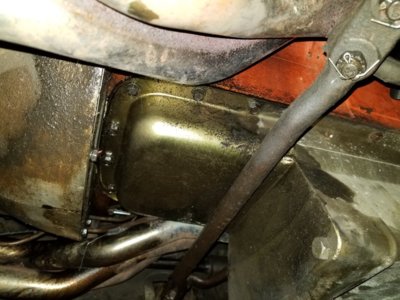There's a good STICKY thread ("The Official Rear Main Seal replacement thread") over on ForBbodiesOnly.com (Forums > Classic Mopar Tech > Engine, Trans & Driveline) for anyone who hasn't done this job before.
I had not a clue, & very little experience overall. But after a lot of reading there & elsewhere, I did a rear seal replacement on my 383 and I'm happy to report that everything is DRY under the car now! In hindsight, it's a pretty straight-forward job. Once the steering linkage is out of the way (use a good tie-rod fork & have new tie-rod boots on-hand because you'll likely destroy the old ones), the second worst part of the job is the oil pan & windage tray & the TWO sets of gaskets you'll need to juggle with it all. Check out the thread over there if you're a newbie like me. Take all the scary stories with a grain of salt ... I found none of the "horror" to be true & I wrote a long post there yesterday (9-10-19) about that.
Interestingly, I had initially thought that my newly replaced seal was leaking, because I've had a small oil drop on the bottom of my flywheel dust cover. Turns out, my pan gaskets were leaking because I used too much RTV on that "sandwich" (pan - gasket - windage tray - gasket - block) ...a corner of a gasket had oozed out a bit. My point: an oil pan leak can look more like a rear seal leak, since apparently it all swirls around at driving speed & ends up on the bottom of that flywheel cover ... right at the weep hole on the bottom ...& looking like it must have come from the rear seal. (So, yeah, I had to re-do the worst part of the job ...steering linkage disassemble & oil pan gaskets.) But all is now DRY underneath! A THIN smear of RTV on both sides of both gaskets is enough to help seal any imperfections in the surfaces. Too much peanut butter on that "sandwich" & your gaskets will ooze out!!


